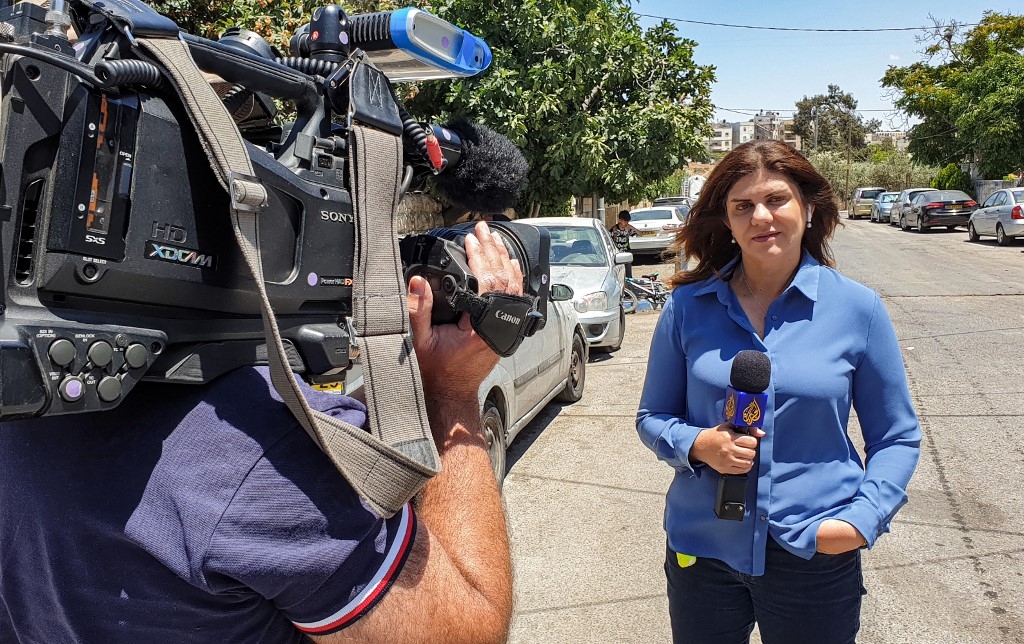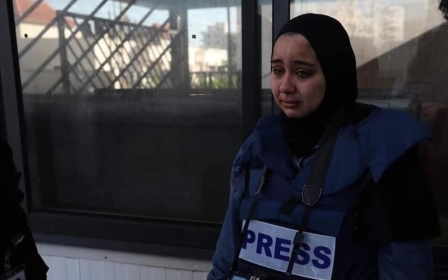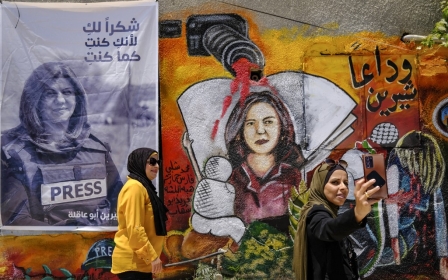Shireen Abu Akleh: Israel says it will test bullet, despite US 'guarantees' to Palestinians

Israeli authorities said on Sunday that they would test a bullet that killed prominent Palestinian-American Al Jazeera journalist Shireen Abu Akleh, despite Palestinian claims they were assured Israel would not take part in testing.
The Palestinian Authority on Saturday handed the bullet that killed Abu Akleh to US authorities for forensic examination.
Abu Akleh was killed on 11 May while covering an Israeli military raid in the Palestinian city of Jenin in the occupied West Bank. Her death sparked Palestinian outrage and widespread international condemnation.
"The relevant parties in the state of Palestine agreed to allow the US side to conduct ballistic works on the bullet. It was handed over to them," Akram al-Khatib, general prosecutor for the Palestinian Authority, said in a statement published by the official Palestinian news agency WAFA.
Khatib said that the bullet was given to US experts "for technical work".
New MEE newsletter: Jerusalem Dispatch
Sign up to get the latest insights and analysis on Israel-Palestine, alongside Turkey Unpacked and other MEE newsletters
"We got guarantees from the American coordinator that the examination will be conducted by them and that the Israeli side will not take part," he told Voice of Palestine radio.
However, Israel said that it would carry out the examination, with US observers present for the procedure.
"The [ballistic] test will not be American. The test will be an Israeli test, with an American presence throughout," said Israeli military spokesman Brigadier-General Ran Kochav.
"In the coming days or hours it will become clear whether it was even us who killed her, accidentally, or whether it was the Palestinian gunmen," he told Israel's Army Radio. "If we killed her, we will take responsibility and feel regret for what happened."
A US embassy spokesperson said: "We don't have anything new at this time."
'Managing arrival of bullet'
Khatib had said the test would take place at the US embassy in occupied Jerusalem, and the bullet would be returned on Sunday.
But Israel's deputy internal security minister Yoav Segalovitz told Army Radio that ballistic test would take "a few days to conduct" to ensure an "unequivocal assessment" among several experts.
Segalovitz added that new Israeli Prime Minister Yair Lapid had been involved in "managing the arrival of the bullet".
Khatib said the Palestinians welcomed the participation of any international bodies to “help us confirm the truth”.
"We are confident and certain of our investigations and the results we have reached," he said.
Investigations by the Palestinian Authority and the United Nations, as well as several journalistic probes, found that the shot that killed Abu Akleh was fired by Israeli forces.
"We find that the shots that killed Abu Akleh came from Israeli security forces," UN Human Rights Office spokeswoman Ravina Shamdasani told reporters in Geneva.
"It is deeply disturbing that Israeli authorities have not conducted a criminal investigation," she said.
The UN rights office inspected photo, video and audio material, visited the scene, consulted experts, reviewed official communications and interviewed witnesses.
The probe examined submissions from the Israeli army and the Palestinian attorney general.
But the Israeli army branded the UN's findings unfounded, insisting it was "not possible" to determine how Abu Akleh was killed.
"The IDF (Israel Defence Force) investigation clearly concludes that Ms Abu Akleh was not intentionally shot by an IDF soldier and that it is not possible to determine whether she was killed by a Palestinian gunman shooting indiscriminately... or inadvertently by an IDF soldier," the military said.
'Independent investigation'
The official Palestinian investigation found that the Qatar-based television channel's star reporter was killed after being hit by a bullet just below her helmet.
It found that Abu Akleh was killed with a 5.56 millimetre armour-piercing round fired from a Ruger Mini-14 rifle.
US Secretary of State Antony Blinken promised last month to pursue accountability over the killing of Abu Akleh wherever the facts might lead.
'We will follow the facts, wherever they lead. It's as straightforward as that'
- US Secretary of State Antony Blinken
"We are looking for an independent, credible investigation. When that investigation happens, we will follow the facts, wherever they lead. It's as straightforward as that," said Blinken.
On Saturday, the Israeli military, prime minister's office and defence ministry did not immediately comment when asked whether it would cooperate with the US investigation and, if so, how.
Defence Minister Benny Gantz said in May that Israel was "prepared to conduct an investigation in collaboration with international actors".
But it says it cannot determine whether she was shot accidentally by an Israeli soldier or by a Palestinian militant during an exchange of fire without examining the bullet to see if it matches an Israeli military rifle.
US President Joe Biden is expected to meet separately with Palestinian and Israeli leaders during a visit to the region between 13-16 July.
Video footage showed that Abu Akleh, 51, was wearing a blue vest clearly marked "Press" when she was shot.
At least two colleagues who were with her said they had come under Israeli sniper fire without being near any militants.
Middle East Eye delivers independent and unrivalled coverage and analysis of the Middle East, North Africa and beyond. To learn more about republishing this content and the associated fees, please fill out this form. More about MEE can be found here.





